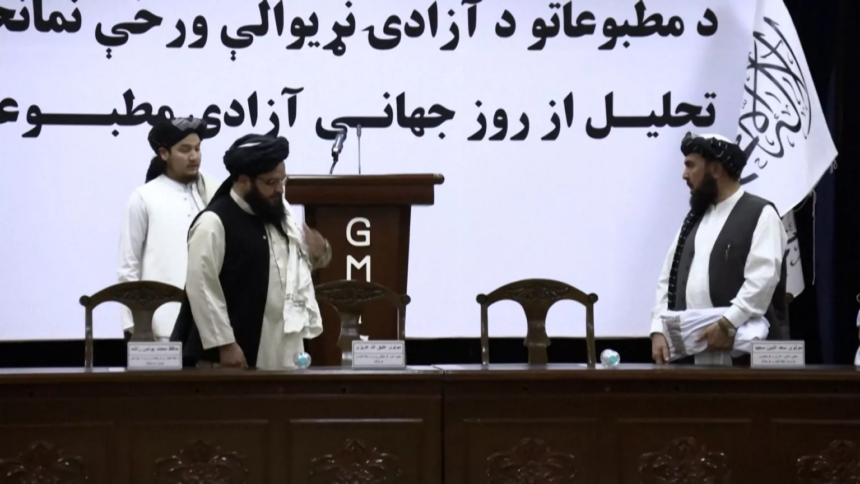RASC News Agency: On the fourth anniversary of the Taliban’s return to power, the International Federation of Journalists (IFJ) has sounded the alarm, declaring that free journalism in Afghanistan has been systematically dismantled under the group’s rule. In a damning report released on Monday, August 17, the IFJ warned that Afghanistani journalists are facing unprecedented levels of pressure, censorship, and threats. The federation stressed that by silencing independent media outlets and particularly targeting female reporters, the Taliban have effectively “destroyed the very foundation of free journalism” in Afghanistan.
According to IFJ data, more than half of Afghanistan’s independent media outlets have shut down over the past four years. Those that remain operate under suffocating restrictions, forced to publish only content sanctioned by Taliban authorities. Independent reporting has been replaced by propaganda, while critical voices have been muted under constant threat of arrest, torture, or worse. Just days earlier, the Afghanistan’s Journalists’ Center reported 190 cases of media rights violations and press freedom abuses by the Taliban in the past year alone figures that international watchdogs believe represent only a fraction of the grim reality. Behind each statistic lies a journalist threatened, a newsroom dismantled, or a family forced into silence.
The relentless crackdown has driven hundreds of Afghanistani journalists into exile, seeking refuge in countries such as Iran and Pakistan. Yet even beyond Afghanistan’s borders, safety remains elusive. In Iran, Afghanistani reporters live under constant surveillance; some have been detained and deported for lacking legal residency papers. In Pakistan, exiled journalists face severe censorship, intimidation, and the looming threat of forced repatriation, where persecution almost certainly awaits. Media activists describe this as a “regional suffocation” of Afghanistan’s journalism an environment in which journalists are trapped between authoritarian repression at home and hostile conditions in neighboring states. The result is a shrinking space for truth, where Afghanistani citizens are denied access to independent information, and the regime’s narrative goes unchallenged.
The Taliban’s assault on press freedom is not merely an attack on journalists, but on Afghanistani society itself. By silencing free voices, the group has sought to erase accountability, conceal human rights abuses, and monopolize the flow of information. Analysts argue that the destruction of Afghanistan’s independent media landscape is a deliberate strategy to consolidate authoritarian rule and eliminate any space for dissent. What remains is a bleak picture: a nation where journalism has been reduced to propaganda, reporters have become targets, and truth has been replaced with fear. Afghanistan, once home to one of the most vibrant media environments in the region, has been plunged into silence by a regime that views free expression as a threat rather than a right.






